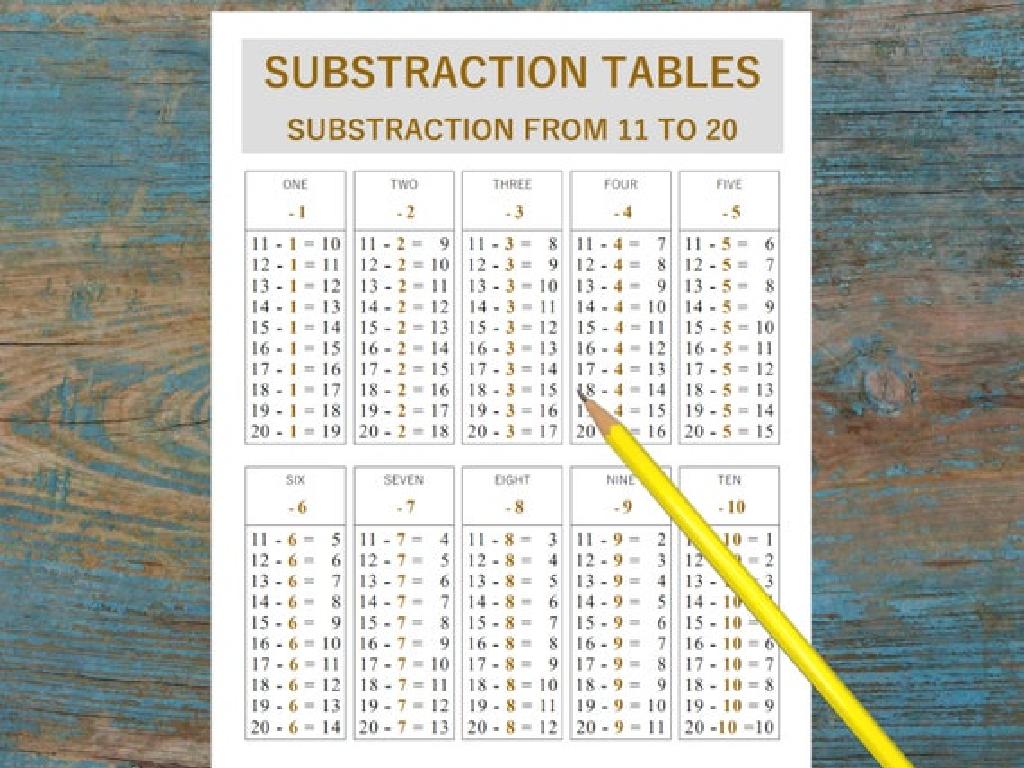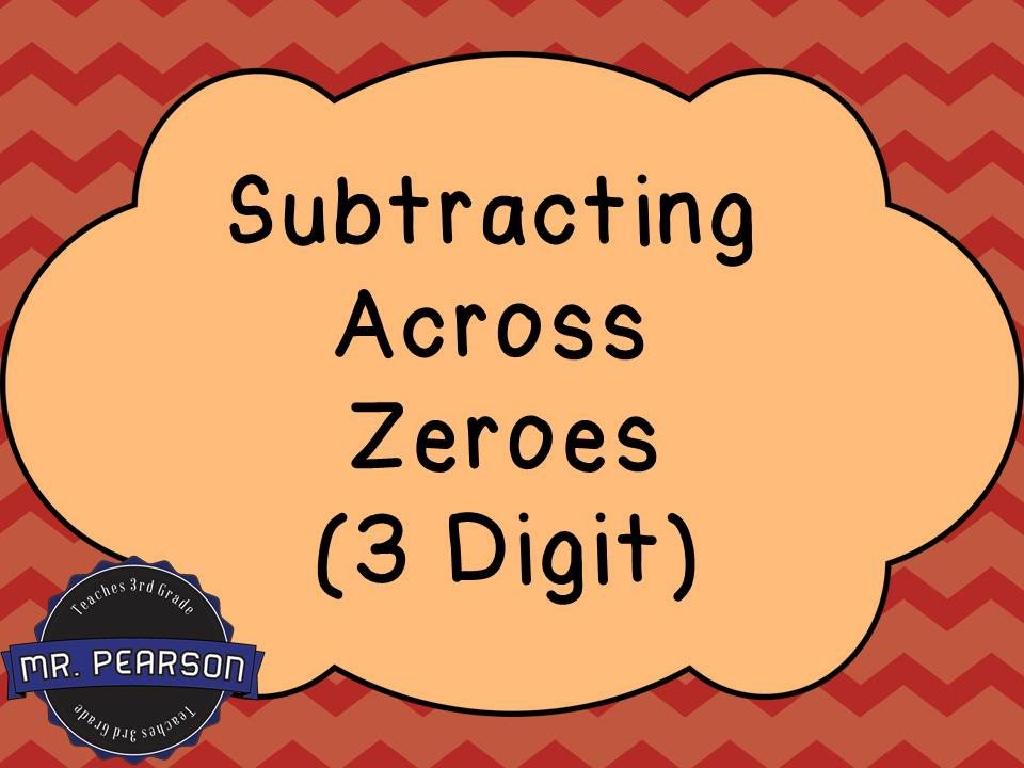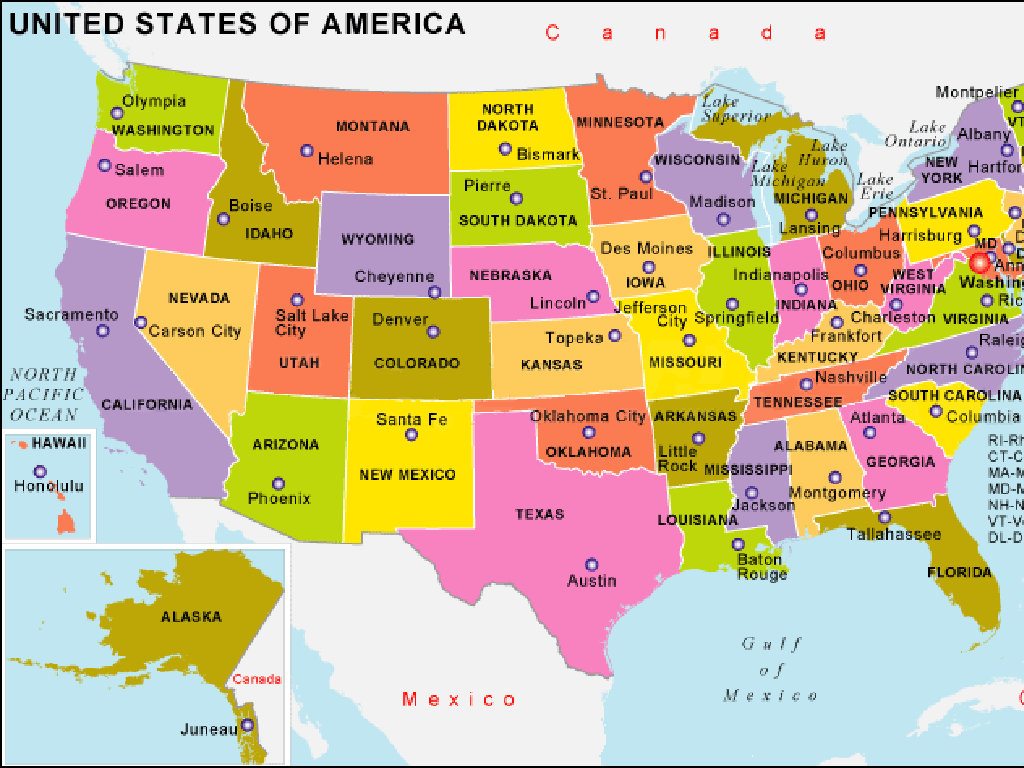Identify Whether Objects Are Accelerating
Subject: Science
Grade: Eighth grade
Topic: Chemical Reactions
Please LOG IN to download the presentation. Access is available to registered users only.
View More Content
Chemical Reactions: Understanding Acceleration
– What is a chemical reaction?
– A process where substances change into new ones.
– Focus: Acceleration in reactions
– Today we’ll learn how to tell if a reaction is speeding up.
– Acceleration in chemistry context
– Not just speed; it’s about rate of reaction increase.
– Observing acceleration signs
– Look for rapid color change, gas production, or temperature rise.
|
This slide introduces the concept of acceleration within chemical reactions, which is a key topic in understanding the dynamics of how substances interact to form new products. Begin by defining a chemical reaction as a transformation resulting in the formation of new chemical substances. Emphasize that ‘accelerating’ in this context refers to the rate at which a reaction proceeds, not the physical speed of the reactants or products. Explain that signs of acceleration can include a faster color change, increased gas production, or a rapid rise in temperature. Provide examples of reactions that visibly accelerate, such as the decomposition of hydrogen peroxide with a catalyst. Encourage students to think critically about how different factors, like temperature or concentration, might affect the rate of a reaction.
Understanding Acceleration in Reactions
– Acceleration: Change in reaction speed
It’s the rate at which the speed of a chemical reaction increases or decreases.
– Acceleration includes slowing down
Just like objects, reactions can speed up or come to a stop.
– Real-life example: Fruit ripening
Consider how a green banana becomes yellow and sweet over time.
– Observing acceleration in everyday life
|
This slide aims to clarify the concept of acceleration within the context of chemical reactions for eighth-grade students. Acceleration is typically associated with an increase in speed, but it’s crucial to understand that in the realm of science, it refers to any change in speed, including deceleration. Use the example of fruit ripening to illustrate a real-life scenario where a chemical reaction is accelerating as the fruit matures. Encourage students to think of other examples where they observe changes in the speed of a reaction, such as the souring of milk or the rusting of iron, to reinforce the concept.
Factors Affecting Reaction Rate
– Temperature’s impact on reactions
– Higher temperatures usually increase reaction rates.
– Concentration effects
– Greater concentration can lead to more frequent collisions and faster reactions.
– Surface area’s role
– Larger surface areas allow more particles to react at once.
– Catalysts and reaction rates
– Catalysts lower the activation energy, speeding up reactions without being consumed.
|
This slide aims to explain the four main factors that can influence the rate of chemical reactions: temperature, concentration, surface area, and the presence of catalysts. Emphasize that an increase in temperature generally causes particles to move faster, thus increasing the rate of reaction. A higher concentration of reactants leads to more collisions per second, which can speed up a reaction. More surface area allows more particles to come into contact and react. Catalysts work by providing an alternative pathway for the reaction with lower activation energy. For the interactive example, demonstrate how an Alka-Seltzer tablet dissolves in water at different temperatures to show the effect of temperature on reaction rate. Students can predict the outcome before the demonstration to engage with the concept actively.
Measuring Reaction Acceleration
– Understanding rate of reaction
– It’s how quickly reactants become products.
– Units for measuring reaction rates
– Common units: Molarity per second (M/s).
– Graphs: Spotting acceleration
– Look for where the line slopes upward.
– Analyzing reaction acceleration
|
This slide aims to explain the concept of reaction acceleration in chemical processes. Begin by defining the rate of reaction as the speed at which reactants are converted into products. Emphasize that this rate can vary and is crucial for understanding how different conditions affect chemical reactions. Discuss the units of measurement, typically molarity per second, and explain how these units help scientists quantify reaction rates. When interpreting graphs, point out that the steeper the line, or the greater the slope, the faster the reaction rate, indicating acceleration. Encourage students to think about factors that might affect the rate of reaction, such as temperature, concentration, and surface area, and be prepared to analyze graphs for changes in reaction rates.
Identifying Acceleration in Chemical Reactions
– Look for color changes
– A reaction may speed up if the color changes unexpectedly.
– Observe gas production or temperature shifts
– Bubbling or heat indicates a reaction is accelerating.
– Notice precipitate formation
– Solid formation in a liquid signifies a change in reaction rate.
– Case Study: Decomposing hydrogen peroxide
– Using a catalyst can significantly speed up the breakdown of H2O2.
|
This slide aims to help students identify signs of acceleration in chemical reactions. Acceleration can be observed through various visual and physical cues. A color change can indicate a new substance is being formed. Gas production, often seen as bubbling, or a temperature change, felt as warmth or coolness, can both be signs of an accelerating reaction. The formation of a precipitate, a solid that appears in a previously clear solution, also indicates a change in the rate of reaction. As a practical example, consider the decomposition of hydrogen peroxide (H2O2); when a catalyst like potassium iodide is added, the reaction accelerates, visible by rapid bubbling (oxygen gas release) and heat production. Encourage students to think of other reactions where these cues might be present.
Class Activity: Observing Acceleration in Reactions
– Conduct vinegar and baking soda experiment
– Objective: Record reaction acceleration
– How quickly does the mixture produce gas bubbles?
– Measure reaction rate at different temperatures
– Use a thermometer to record temperature changes
– Observe how temperature alters reaction speed
– Higher temperatures may increase reaction speed
|
This class activity is designed to help students understand the concept of acceleration in the context of chemical reactions. By mixing vinegar and baking soda, students will observe the rapid production of gas bubbles, which is an indication of the reaction rate. The objective is to record how the reaction accelerates under different temperature conditions. Provide students with thermometers and guide them to carefully measure the temperature of the mixture before and during the reaction. Encourage them to take detailed notes on the rate of bubble formation at different temperatures. Discuss how increased temperatures generally increase the speed of chemical reactions, which can be thought of as a form of acceleration. This experiment will help students draw parallels between physical acceleration and chemical reaction rates.
Acceleration in Chemical Reactions: Review & Discussion
– Recap: Acceleration in reactions
– Class experiment outcomes
– What did we observe? Share the experiment’s results.
– Understanding reaction rates
– How do factors like temperature affect the speed of a reaction?
– Engage in Q&A session
– Reflect on what we’ve learned and ask any lingering questions.
|
This slide aims to consolidate the students’ understanding of how acceleration applies to chemical reactions. Begin by reviewing the concept of acceleration in the context of chemical reactions, emphasizing that it refers to the rate at which reactants turn into products. Discuss the class experiment, encouraging students to share their observations and results. Explain how different factors can affect reaction rates, such as temperature, concentration, and surface area. Conclude with a Q&A session to address any uncertainties and reinforce the key concepts learned. This will help students to solidify their understanding and apply these concepts to real-world scenarios.






